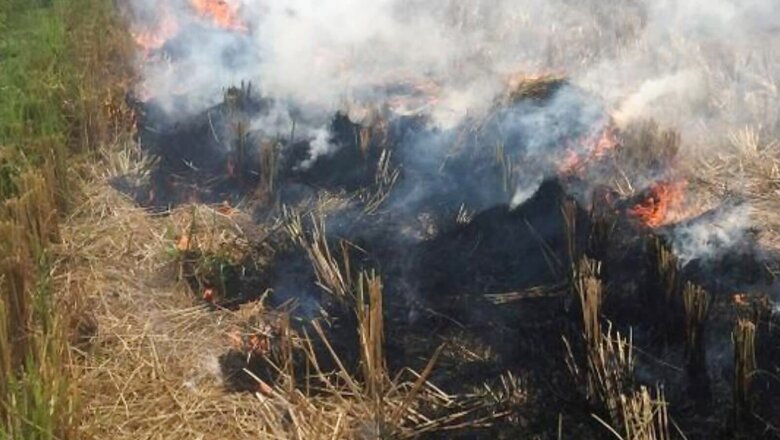
views
Even before the coronavirus pandemic hit India, people in the national capital had embraced the use of mask owing to the air pollution. The thick layer of smog consisting of soot, dust and other particulate matter makes it difficult for people to breathe in the capital city especially around October-November. Every year around month of October, landscape of Delhi and other northern regions of the country turns apocalyptic. The main reason identified behind this recurring environmental hazard is burning of stubble, or as known in Hindi, ‘parali’. Farmers from Haryana, Punjab and Delhi burn stubble to clear the fields for next sowing season. But what is this parali and why it poses harm for the human health?
What is Parali or stubble?
After ripening of the paddy crops, only the upper portion is harvested and the lower portion is left behind. The lower portion remains on the field with roots underneath. With mechanized tools for harvesting, the crop is cut from even a higher part which leaves stubble with slightly increased length. This leftover part of the crop has no utility for the farmers. Therefore, to clear the field for the next sowing season, farmers usually burn this dry stubble which in turn becomes the reason for the pollution.
National Green Tribunal’s ruling on the issue
In 2018, The National Green Tribunal had put a ban on burning of stubble on grounds of damaging environment. Moreover, the NGT order states about imposing fine of Rs 2,500 if the straw is burnt on 2 to 5 acres of land and a fine of Rs 5,000 if stubble is burnt on area more than 5 acres.
Additionally, the Tribune has also suggested giving incentives to those farmers who do not burn stubble. It has also suggested to provide farmers with CRM machine and convert crop residue into organic fertilizer by setting up decentralized composting.
Ill effects of burning stubble
Burning the stubble has a lot of effects on human health as well as the environment. Gases like Carbon Monoxide and Carbon Dioxide released from burning of stubble results in severe air pollution. This creates a lot of health problems like skin and eye irritation, severe neurological cardiovascular and respiratory diseases, asthma, chronic obstructive pulmonary disease (COPD), bronchitis, lung capacity loss, emphysema, cancer, etc.
The risk has just accumulated after the Covid-19 pandemic had set its foot. According to a 2020 study by Harvard University, with increase of PM 2. 5 by just one microgram per cubic meter, the deaths associated with it due to Covid-19 increases by 8%.
Besides health hazards, farmers too are at a loss from economic perspective as it affects the soil quality. Important nutrients of the soil gets destroyed.
Probable Solutions
There are machines available which presses the stubble completely into the ground but for most farmers the machine is unaffordable. They demand from the government to provide with some alternatives else they will be left with no other option but to burn the straws.
In 2016, then Science Minister Dr Harshvardhan had inaugurated a bio-fuel plant in Kashipur district of Uttarakhand. The plant converts agricultural waste into ethanol which can be mixed with petrol to fuel vehicles. More of these plants can be set up so that this problem can have an end in sight.
Read all the Latest News , Breaking News and IPL 2022 Live Updates here.

















Comments
0 comment